Welcome to Lymphedema & Wound Care Consultants
Where your well-being
is our priority
About us
Our Manual Lymph Drainage therapists are Vodder and Foldi certified, licensed by the State of Texas and trained by the Boston School of Advanced Compression, the Norton School of Lymphedema Management, the American Academy of Lymphatic Studies and the Southwest Institute for Advanced Compression
Have you experienced swelling?
Lymphedema Treatment Method
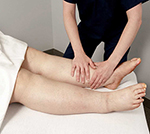
Manual Lymph Drainage (MLD)
More info
MLD results in opening the functioning lymph collectors and moves protein and lymph fluid into them, as well as assisting in increasing lymph flow throughout the lymphatic system.
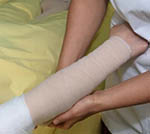
Compression Therapy
More info
Compression therapy is applied after your MLD is completed. Multi Layered Bandaging (MLB) is applied to help move the excess fluid out of the limb, and to prevent the fluid from back flowing into the limb. The science behind compression bandaging is that by applying pressure to the tissue from the outside, aids in moving the fluid into the lymphatic system. The lymphatic fluid is then processed and absorbed or eliminated by your body.
Compression Garments
After the reduction of fluid in the affected area is achieved, medical compression garments are worn to maintain this reduction. Wearing compression garments protects the affected area from having the lymph fluid return. There are many types of compression wear available and your therapist will work with you to find the right garment for you.

Diet, Nutrition and Exercise
More info
Diets high in salt, fat and preservatives may cause an new onset of lymphedema. Diagnostic testing, including an oxygen uptake test, is performed to test the metabolic rate and monitor the caloric intake, this helps to determine a proper diet and nutrition plan as well as monitor patient compliance.
Range of Motion Exercises (ROM) in moving lymphatic fluid. These exercises, along with wearing your compression, allow your muscles to assist in pushing the fluid up and out of your limb. Your therapist will provide you with the correct exercises for your treatment plan. We recommend you do not start any exercise program without consulting your physician or therapist first.
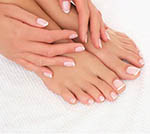
Skin & Nail Care
More info
When getting a manicure, make sure you are being manicured with clean instruments and explain that you have lymphedema and must avoid nicks or cutting of your cuticles.
Additionally, protect your skin from sunburns or insect bites, by using sunscreen and insect repellant, when outdoors.
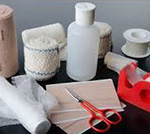
Wound Care
More info
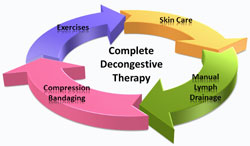
Complete Decongestive Therapy (CDT)
More info
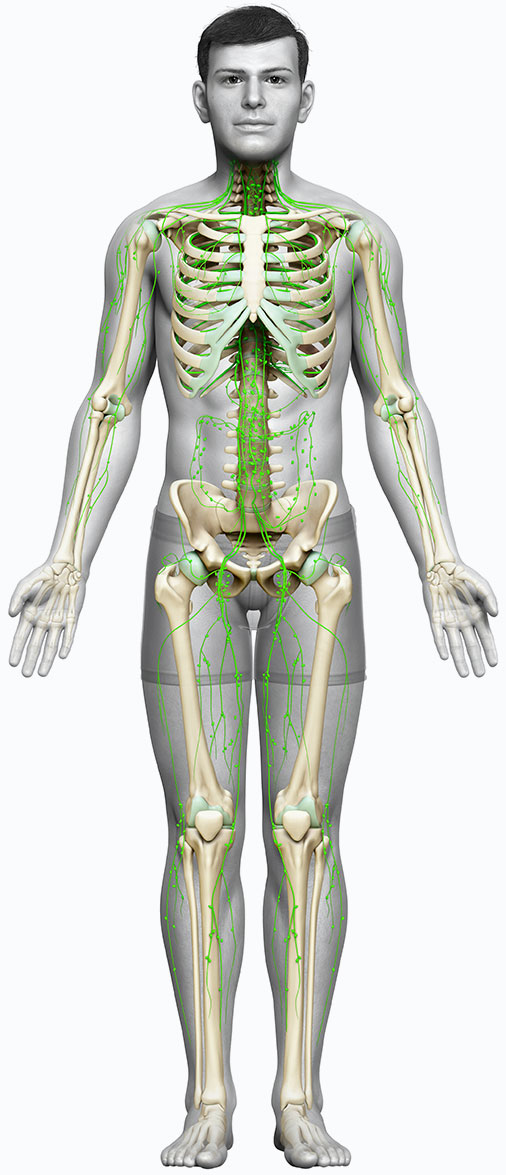
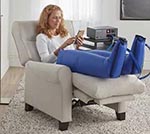
Compression Pump Therapy
More info
Pneumatic compression pumps may only be used under a physicians order. The pump may be supervised in the facility in conjunction with other treatment modalities. The physician may also order the pump for permanent home use, however the physician must prescribe the treatment pressure, frequency and duration of use.
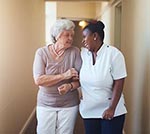
Transition to Home Maintenance Phase
More info
Before discharging from your treatment, you will be able to:
- Self Lymphatic Drainage (SLD) to move stagnant lymph out of the tissues.
- Compression bandaging to prevent the swelling from returning to the tissue, if needed.
- Skin care to maintain the health and integrity of your skin, to assist and prevent a wound and/or infection.
- Range of Motion Exercises to maintain the flow of lymph, increase your mobility, assist in controlling your weight, and improve your general health and well-being.
- Diet and Nutritional Counseling to aid in maintaining a healthy weight and low sodium diet.

Education for Patient, Family, Caregiver, etc.
More info
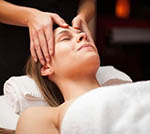
Pre -OP Manual Lymph Drainage (MLD)
More info
MLD increases blood flow, promotes detoxification, facilitates healing and supports the immune system. The effects of MLD treatment may reduce the risk of post-surgical complications and assist in avoiding infection, excessive swelling, bruising and scar tissue.
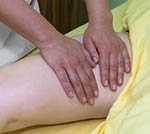
Post -OP Manual Lymph Drainage (MLD)
More info
MLD therapy provides a wide variety of benefits, and the most significant post-op benefit is the reduction of pain, bruising and edema. Post-Op MLD can accelerate the healing process.
Testimonials
What our patients are saying
– R.
Mr. Jessie went above and beyond to show me the utmost kindness and love in his service, and I thank him, he made my day.”
– A. S.
– L. H.
Our Woodlands / Conroe
location is now open!
150 Pine Forest Drive #107
Shenandoah, Texas 77384